Go-No-Go
The Problem.
The aimed of this project was to design an interactive product that allows tangible interactions between product and users by providing a feedback-attention-status reaction in the sports rehabilitation arena. A proposal was given by the client, Queensland Academy of Sports (QAS) to explore the realm of joint monitoring in competitive sports (running) that measures the functions of rotation, pace/speed, and load force for personal use of young athletes.
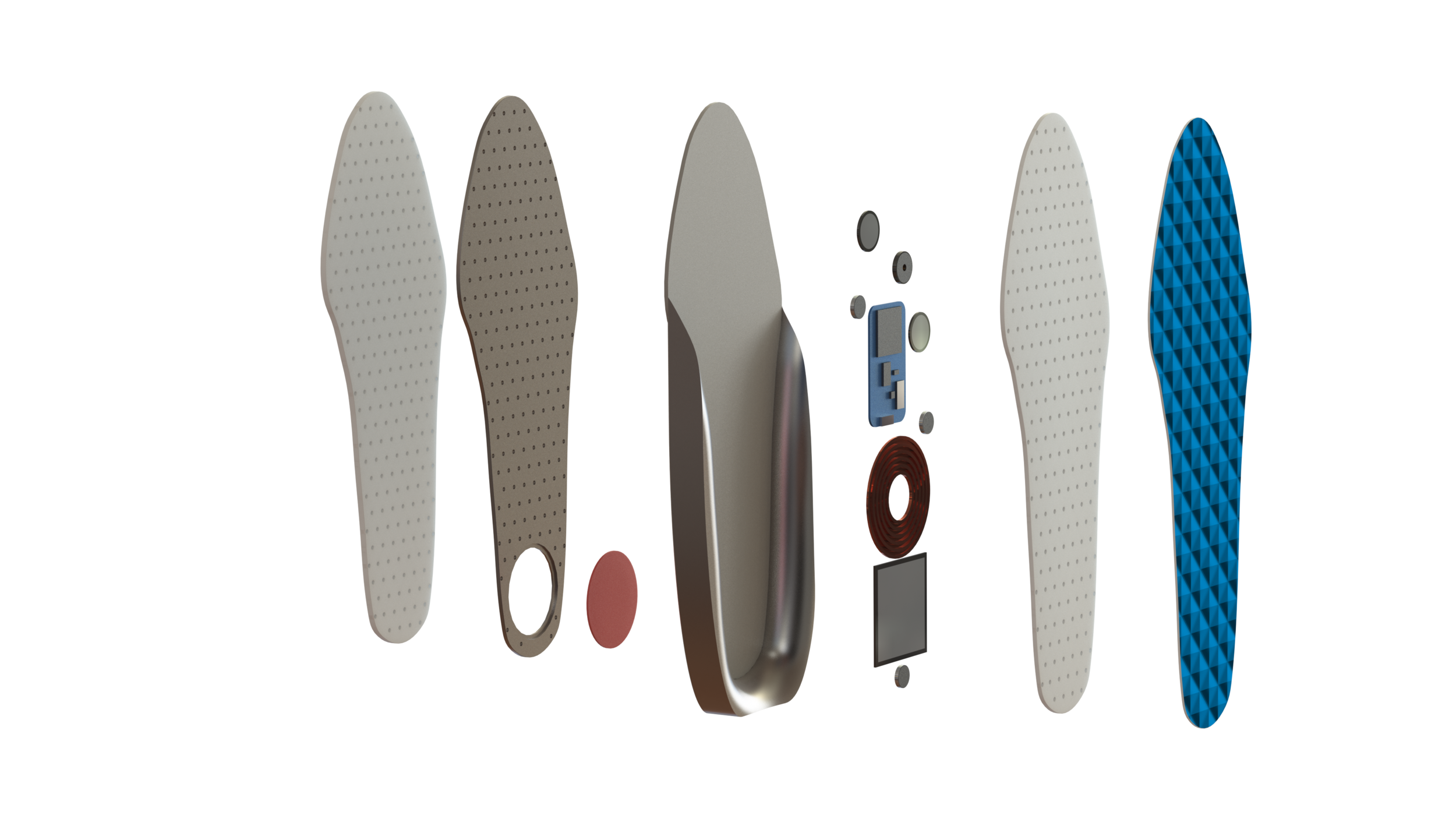


The Solution.
How It Works?
“Go-No-Go” is an interactive device for the management of ankle injury for middle distance
runners that are going through training for the Olympics.
The “Go-No-Go” has 3 main functions:
Monitoring/tracking of runner’s ankles by measuring the eight different sensors
which include: tracking GPS, vibration sensor, an accelerometer, cadence,
pelvic drop, pelvic rotation, breaking, and bounce.Support the users to prevent further ankle injuries by using accurate metrics,
which will be monitored. An effective elevated warning sensors/sounds system
will be incorporated into the product to provide guidance for better performance
and customise target zone (injury).Enabling remote interactions for ankle injury diagnosis that runs through the
app analysis, which will receive data that is being gathered during the live
training, will inform athlete through instant feedback from coach voice. This will
help ensure that the incorrect movements or positions will be adjusted, and
proper techniques will prevent future injuries for the athletes and sports’
stakeholders.
The “Go-No-Go” interacts with the user through gestural interactions for prevention of
further or future ankle injuries, and with the use of smartphone apps to assist people
viewing the progress of training.
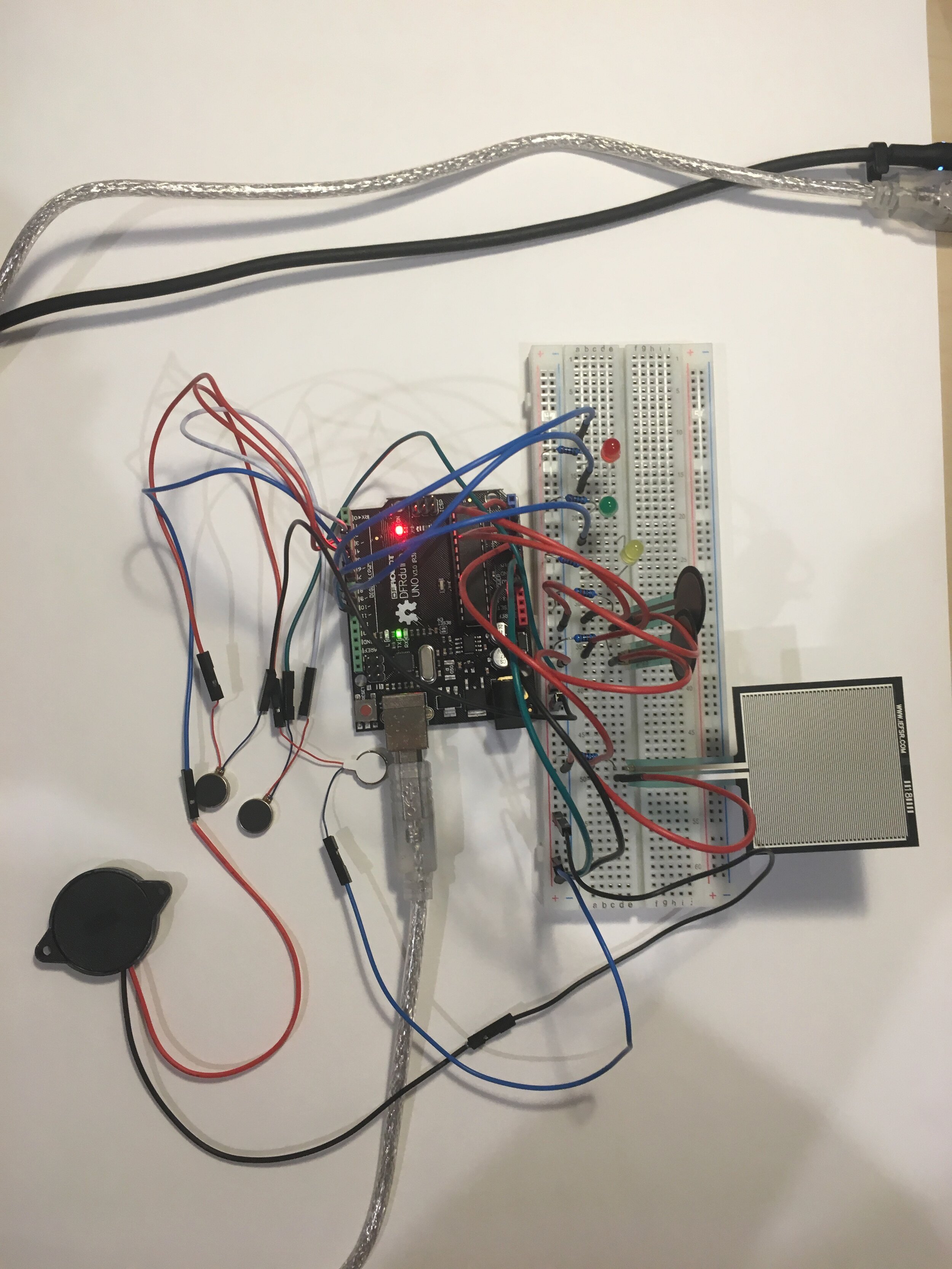
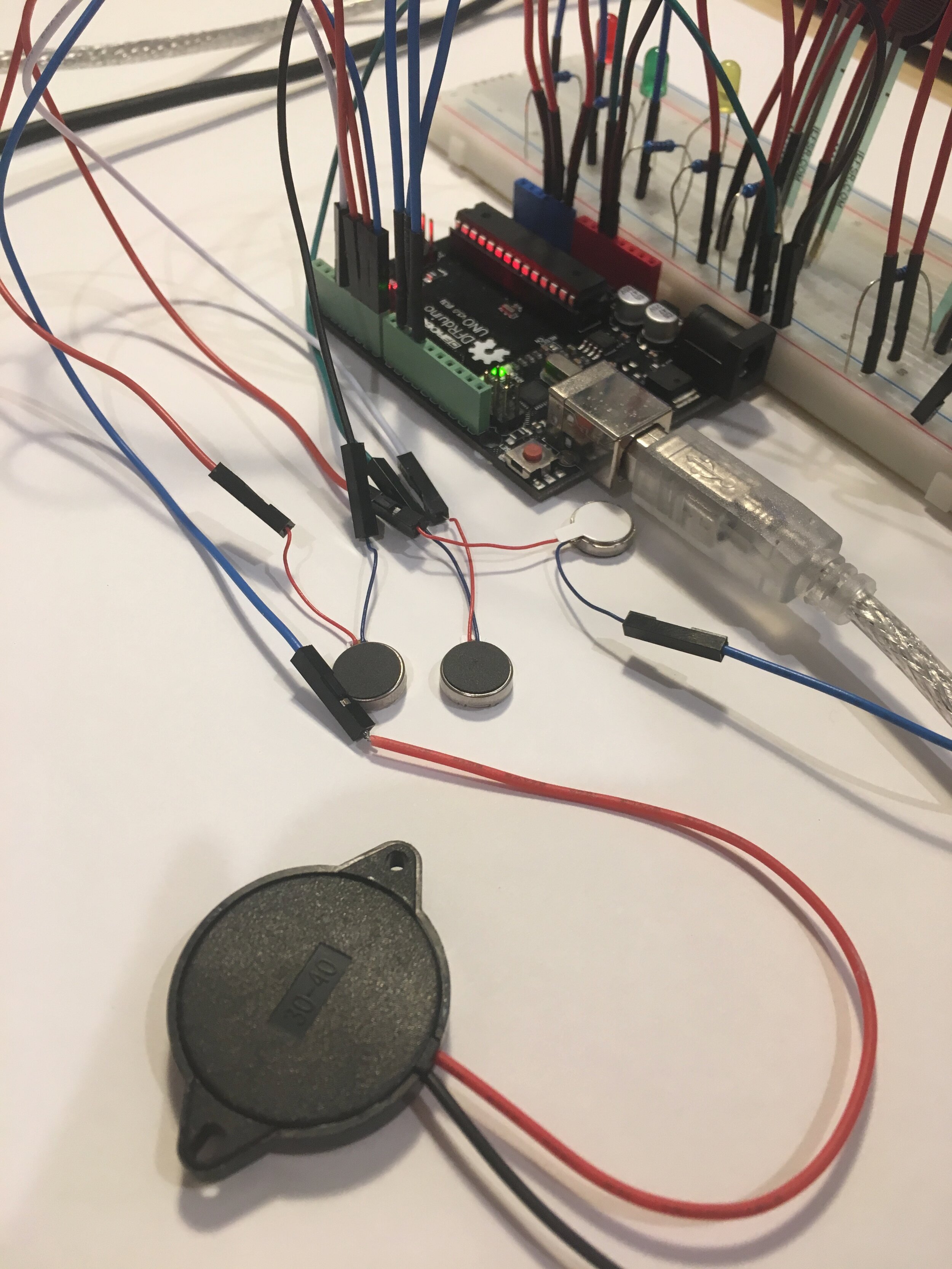
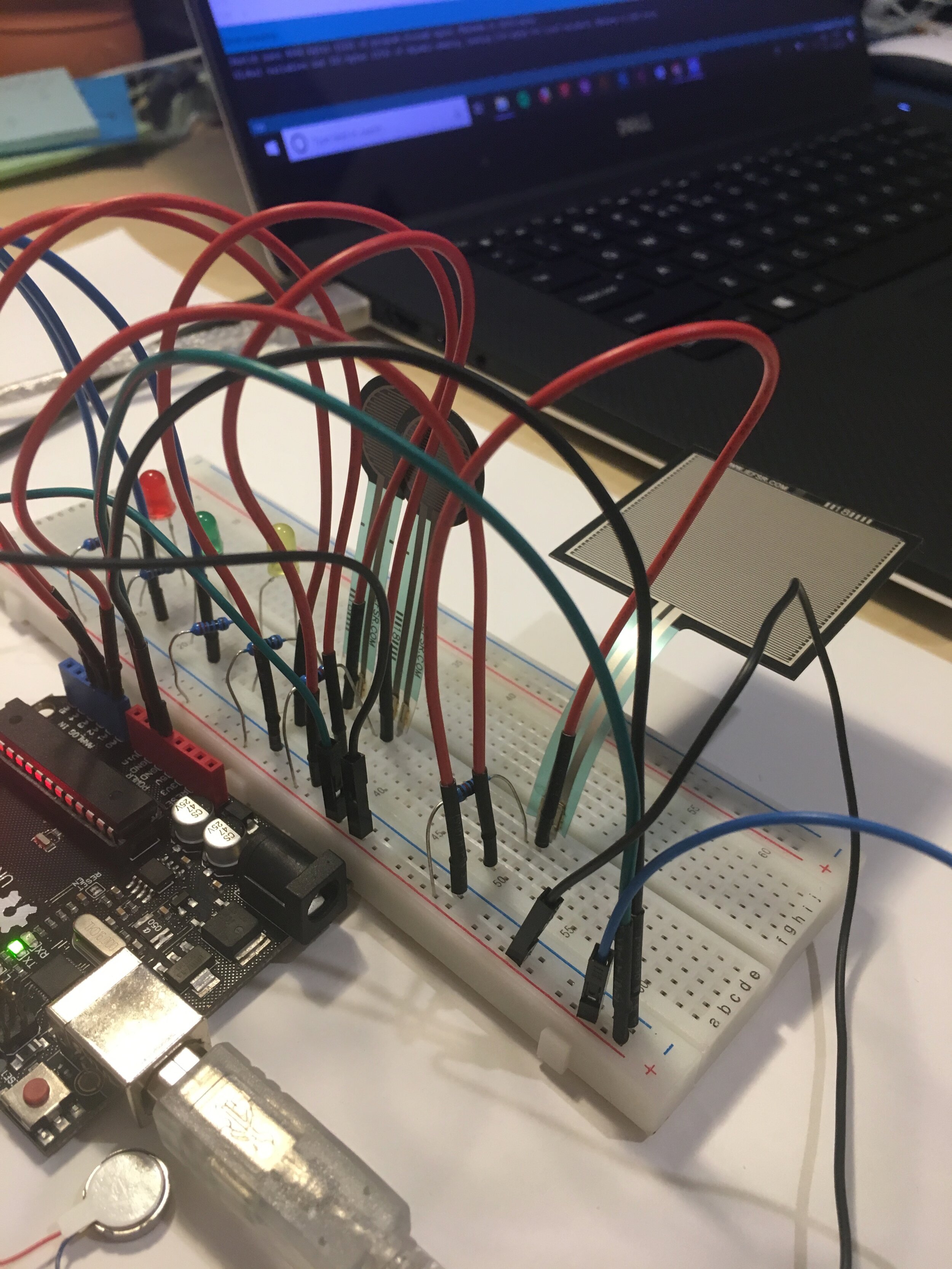
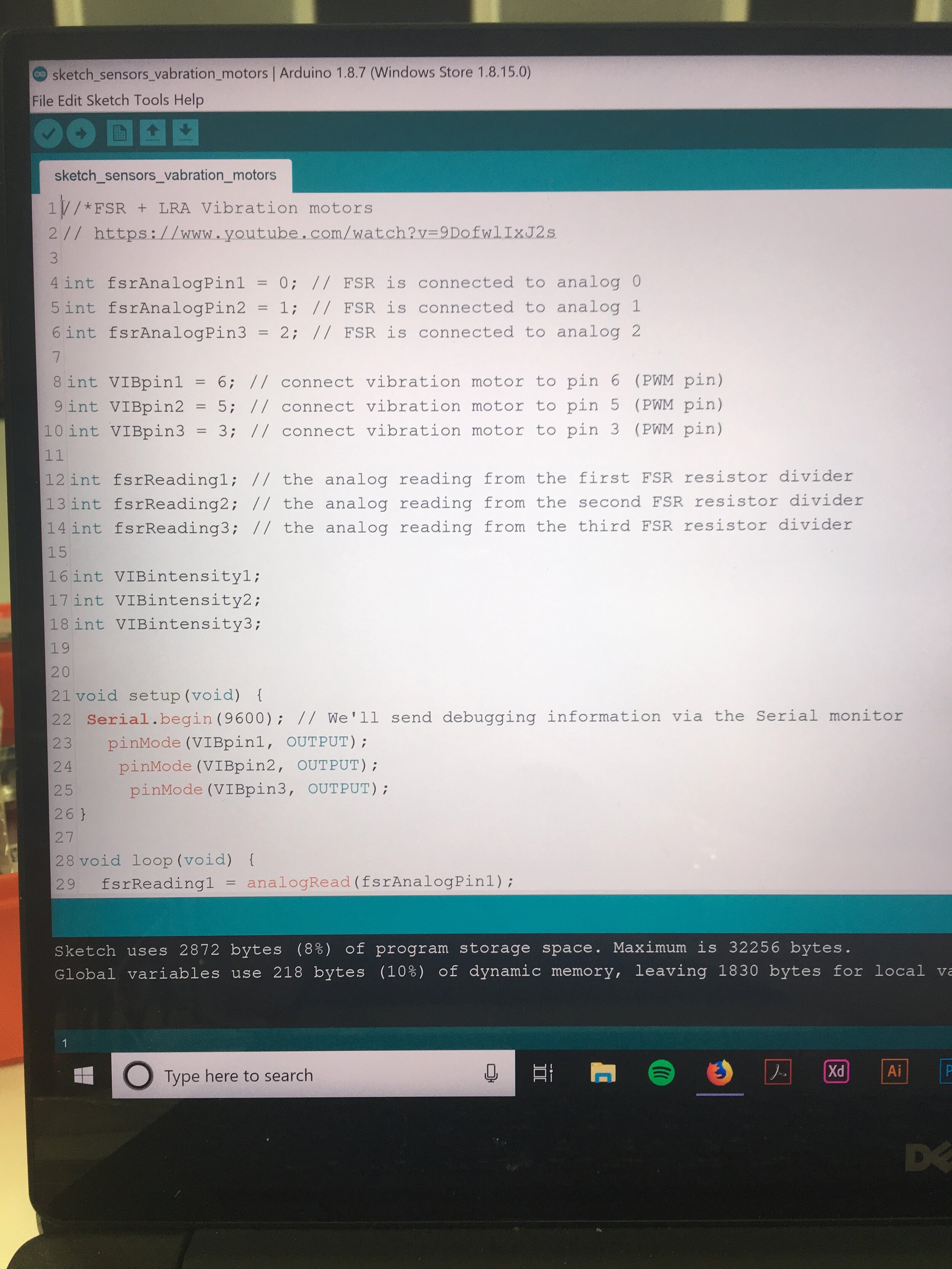

Proof Of Concept.
This Arduino prototype is designed to measure the movement of runner's foot with the help of Pressure Sensors and returning a feedback, status & attention of both sound and light. The Pressure Sensors will be used to monitor and track the biomechanical movement of the foot, position and pressure during training, which will be translated into Vibration and Sound output (Alarm).
Various colour of LEDs is used to correlate with the type of threshold/tolerance that involves in every measured tilt angle of the foot (inversion/eversion). 3 types of tolerance brackets – Acceptable (Green LED), Low Risk (Yellow LED) & High Risk (RED LED) for visual purposes during running. The LEDs are only used to show when the pressure sensors are being used during the presentation.
During the exercise, the runner would be focused on training and the use of sound and vibration will be very convenient to alert them. This produced sound/noise from buzzer will draw the user’s attention, where sound will be a triggered on when threshold gets to the high-risk zone tolerances correlating with the Vibration Mini Motors. Runner will can immediately set the correct adjustment to prevent the likelihood of ankle injury.
Proof Of Concept Video.
This video demonstrates how input (movement of foot) being translated into interactions, will allow the user to understand and take the required course of action/adjustment to make sure that ankle injury can be prevented, through the use of the final prototype.
- 2018 -